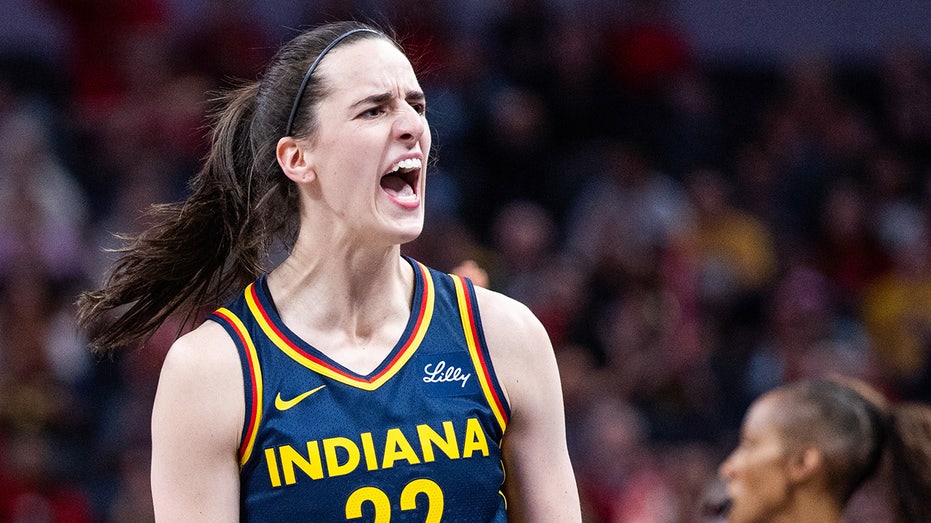Basketball’s Biggest ‘What If’: Inside the Chaos and Uncertainty of Caitlin Clark’s Season-Ending Injury
The announcement every basketball fan had been dreading is now official, and the fallout has been immediate and chaotic. Caitlin Clark, the phenomenal rookie who single-handedly reshaped the WNBA landscape, will not return for the remainder of the 2025 season. In a statement released by Clark and the Indiana Fever, the hope that had been dwindling for weeks was finally extinguished, delivering what many have described as a “gut punch” to fans, the franchise, and the league itself.
This isn’t just an injury update; it’s a seismic event that has flipped the entire sports world upside down. The narrative of a meteoric rise has been violently interrupted, replaced by a storm of doubt, fear, and wild speculation. The player who turned every arena into the hottest ticket in town is now sidelined indefinitely, and her once-certain future has become the most fascinating and terrifying question mark in modern sports. Her story is no longer about what she will do next, but whether she will ever be the same again.
The Bombshell and the Meltdown
While the news wasn’t entirely surprising given her prolonged absence, the finality of it has sent shockwaves across the internet. In her own words, Clark expressed a feeling beyond disappointment: “I had hoped to share a better update, but I will not be returning to play this season… Disappointed isn’t a big enough word to describe how I am feeling.” Her message was one of gratitude for the fans and pride in her team’s resilience, but it couldn’t mask the brutal reality of the situation. The air has been sucked out of the room.

The fan reaction has been a meltdown of epic proportions. Timelines are flooded with a volatile mix of denial, grief, and conspiracy theories. For a season, Clark was more than a player; she was a cultural phenomenon. Now, that energy has been replaced by a chilling silence from the court and a roar of uncertainty off of it. The conversation has pivoted from celebrating a dynasty in the making to anxiously whispering about the fragility of a career that now hangs precariously in the balance.
The Two-Sided Coin of an Unwritten Legacy
In the wake of the news, a fascinating and cruel dynamic has emerged, splitting Clark’s potential legacy into two distinct, dramatic paths.
The first is the story of the “Comeback Queen.” If she can battle back from this setback, defy the odds, and reclaim her throne atop the league, her legend will be magnified tenfold. She will no longer be just a star; she will be an icon of resilience, the hero who stared down a career-threatening blow and refused to fold. Her journey would become a testament to greatness forged in the fires of adversity.

But there is a second, more haunting possibility. If she never returns to her former glory, or if this is the end altogether, her story flips into tragedy. She would become basketball’s biggest “what if”—the cautionary tale of the phenom who burned brilliantly but briefly. And in a twisted way, this outcome could mythologize her even more powerfully. Sports fans are obsessed with tragedy and unfinished stories. An athlete whose peak is frozen in time, forever preserved in that one dazzling, untouchable season, often becomes an untouchable myth. Her legacy would be cemented not by a long list of accolades, but by the infinite, heartbreaking potential of what could have been.
The Vultures Circle
As Clark retreats into the “endless rehab void,” the media machine has kicked into high gear, and it isn’t pretty. The narrative is already being twisted. Think pieces are emerging questioning if she was overrated, a product of hype that couldn’t withstand the physical rigors of the pro game. Online trolls, who were silent during her ascent, are now self-proclaimed medical experts diagnosing her career as finished from their couches.

The media that built her up into a golden goose is now demonstrating its willingness to cash in on her downfall. The debate is no longer about her game; it’s about her durability, her marketability post-injury, and whether her story is now one of failure. Her knee is no longer just a part of her body; it’s the centerpiece of a national conversation she never asked for, a storyline ripe for hot takes and clickbait headlines.
More Than a Physical Injury
What is often lost in the public spectacle is the crushing mental toll this takes on an athlete. Imagine being anointed the “savior of the sport,” only to have your body betray you. The private battle Clark now faces is likely more grueling than any game she has ever played. The fear of being forgotten in a sports world with a notoriously short memory is real. The thoughts that scream in the silence of an empty gym—Will I ever be the same? Was my peak already behind me?—are a form of pressure that no opponent can replicate.
The cruel reality is that she has only one spectacular season on her resume. She doesn’t have a decade of dominance or a shelf full of MVP trophies to fall back on. Her entire legacy rests on that single, electric run, making her margin for error paper-thin. If she can’t build on it, her career risks being reduced to a YouTube highlight reel with a giant, unforgiving asterisk.
This announcement is far more than a season update. It is a season finale cliffhanger, and the suspense is brutal. Is this the end of Caitlin Clark’s rise, or just the most dramatic halftime pause in basketball history? No one knows which way the story will swing, and that is precisely why the entire world can’t look away.



